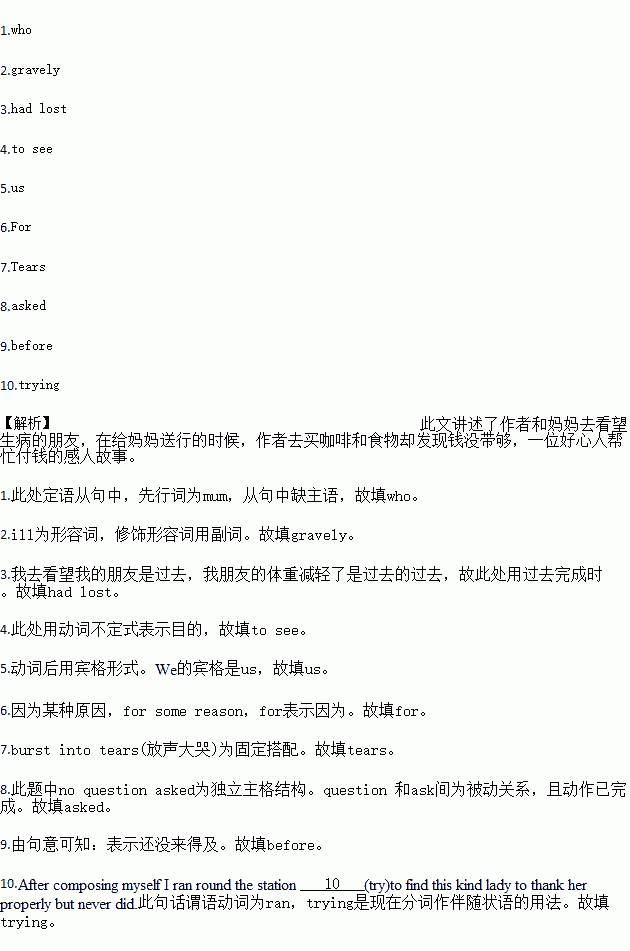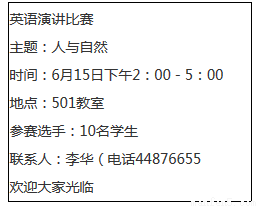题目内容
I had just visited my best friend in hospital with my mum, 1.hadn’t seen my friend since she’d gone into hospital six months earlier.
I knew where she was coming from as she was2.(grave) ill, but as I’d been visiting her every week I had stopped seeing the obvious; my friend3.(lose) most of her body weight and her hair was falling out, it wasn’t looking good.
After the visit I took my mum to the station4.(see) her off on her train; the mood was understandably bleak but I stayed positive as well you do, don’t you? I went to get 5. (we) some coffee and my mum some food for the journey. I misread the amount of my purchase and didn’t have enough money.
6.some reason, this was the straw that broke the camel’s back; I burst into uncontrollable7.(tear) as a massive queue was gathering behind me. A woman came up to me and offered to pay, putting an arm round my shoulder, no questions8.(ask).
I could barely say thank you through the confusion and the flood of emotion that was pumping through me 9. running off in embarrassment. After composing myself I ran round the station 10.(try)to find this kind lady to thank her properly but never did.
 名校课堂系列答案
名校课堂系列答案LOST AND FOUND | ROOMMATES |
FOUND: Cal, 6 months old, black and white marking. Found near Linden and South U. Steve, 800-4661. | FEMALE ROOMMATE WANTING Own room near campus. Available December 1. Rent 129 Thereafter. Call Jill for details. 800-7839 |
LOST: Gold wire rim glasses in brown case. Campus area. Reward. Call Gregg 800-2896 | Need person to assume lease for own bedroom in apt. Near campus, $ 92/mo. Starling Jan. 1. Call 800-6157 after 5 pm |
FOR SALE | HELP WANTED |
MOVING: Must sell. TV b/w 12, $ 50; AM/FM transistor radio A/C or battery, %15; cassette tape recorder, $ 10; music records, Call John or Pat, 800-0739 after 5 pm or weekends | BABYSITTER—MY HOME If you are available a few hours during the day, some evenings and occasional weekends to care for 2 school-age children, please call Gayle Moore days at 800-1111,evenings and weekends at 800-4964 |
USED FUR COATS and JACKETS Good condition. 125. Cull 800-0436 after 12 noon | WAITRESS WANTED: 10 am-2 pm or 10: 30 am-5 pm. Apply in person, 207S. Main Curtis Restaurant |
1.What was lost in campus area according to the LOST AND FOUND ads?
A. A cat. B. A radio.
C. A cassette tape recorder. D. A pair of glasses.
2.You will have to call if you want to buy a radio.
A. 800-0436 B. 800-0739
C. 800-4964 D. 800-4661
3.Which of the following ads will you answer if you want a job of taking care of children?
A. LOST AND FOUND B. ROOMMATES
C. HELP WANTED D. FOR SALE


